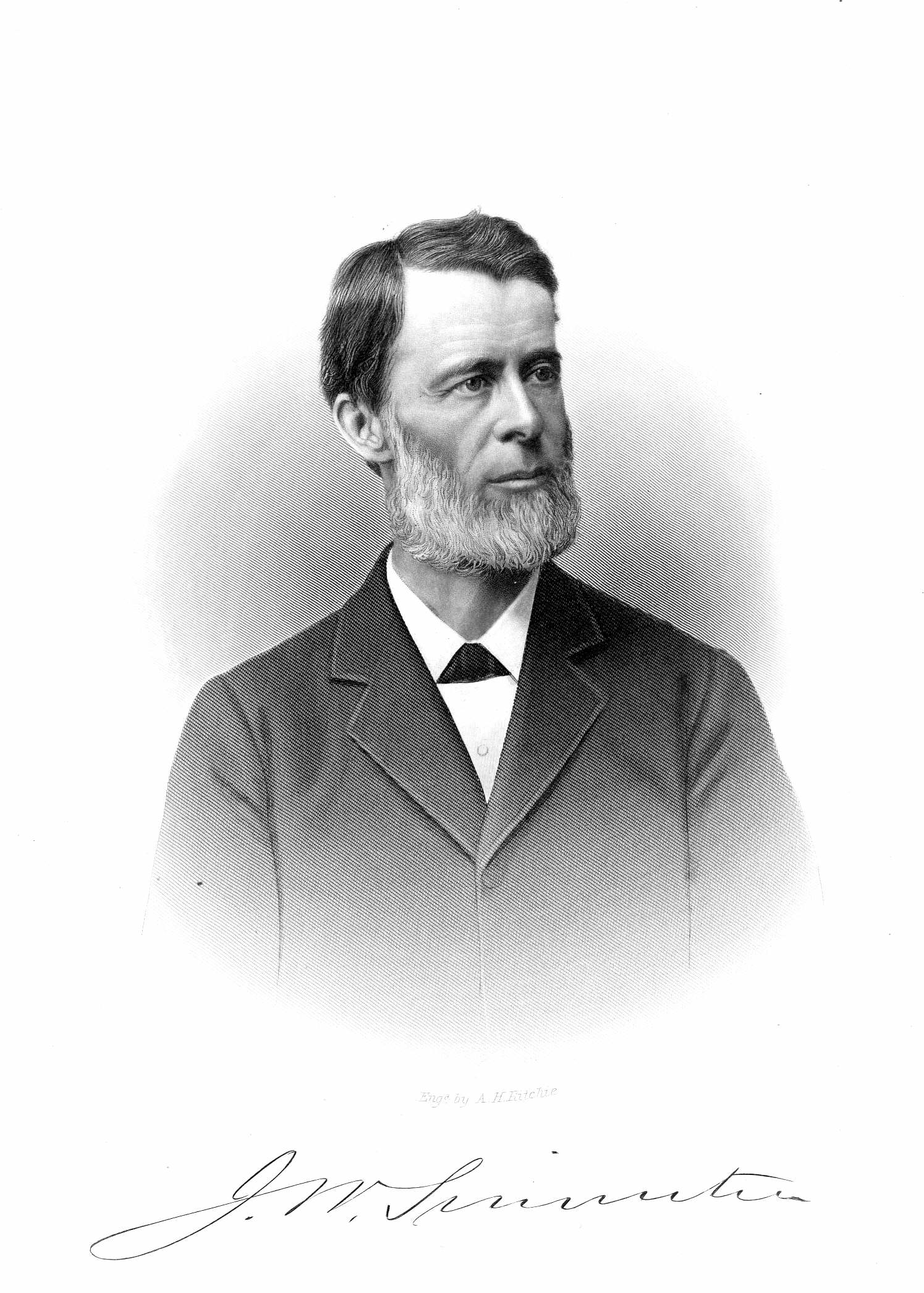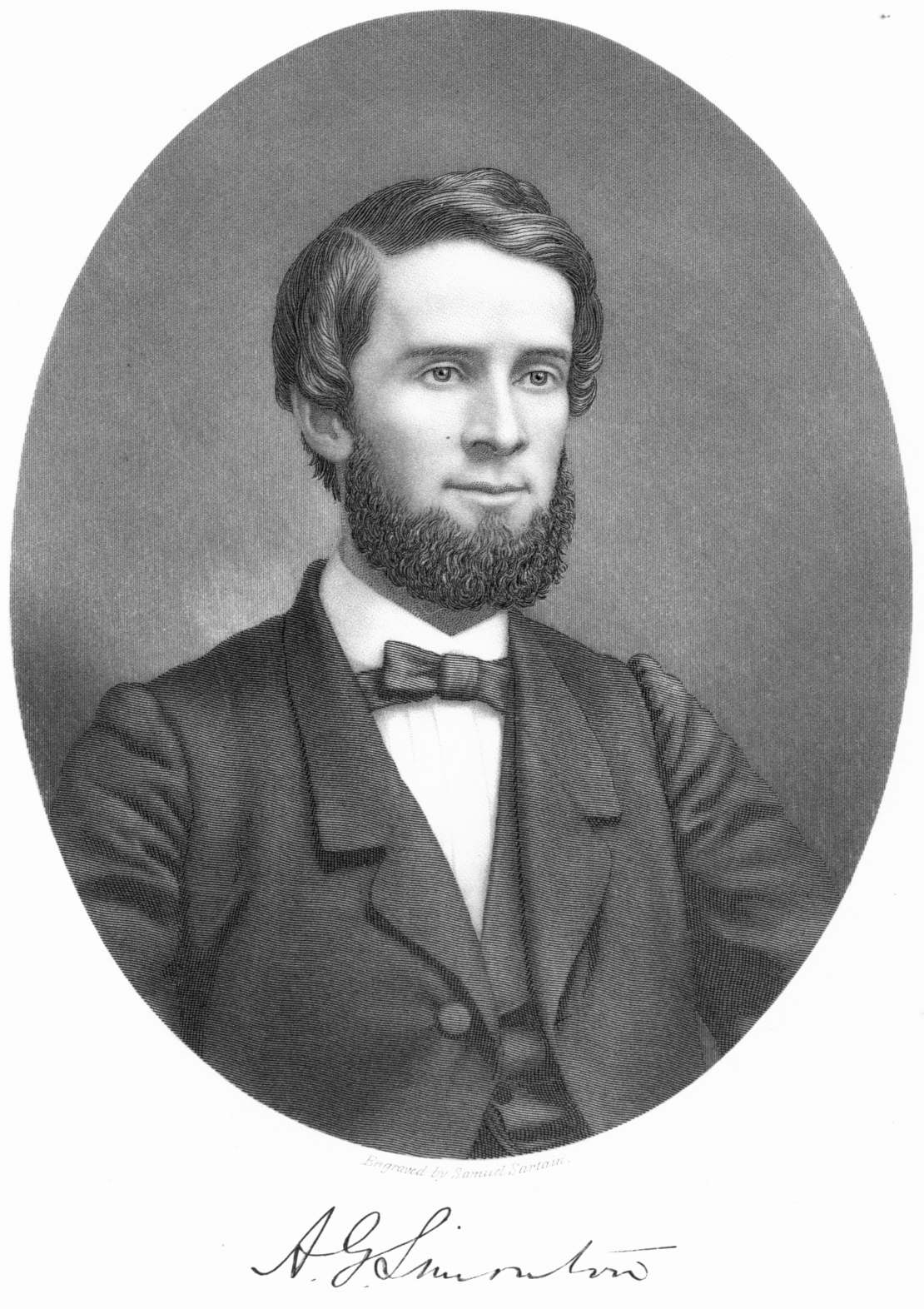Husband Hon. William Simonton, M.D. 1 2
Born: 1788 - West Hanover Twp, Dauphin Co, PA 3
Christened:
Died: 17 May 1846 - Hanover, Dauphin Co, PA 3
Buried: - Hanover Church Cemetery, Hanover, Dauphin Co, PA
Father: William Simonton (1755-1800) 4 5
Mother: Jane Wiggins (1756-1824) 6
Marriage:
Wife Martha Davis Snodgrass 3
AKA: Elizabeth W. Snodgrass 7
Born:
Christened:
Died: Apr 1862
Buried: - Hanover Church Cemetery, Hanover, Dauphin Co, PA
Father: Rev. James Snodgrass ( - ) 7
Mother:
Children
1 M Hon. John Wiggins Simonton 2 7

Born: 1830 - West Hanover Twp, Dauphin Co, PA 2 7
Christened:
Died:
Buried:
Spouse: Sarah H. Kunkel ( - ) 2 7 8
Marr: 8 Jul 1856 2 7
2 M Rev. Ashbel Green Simonton 6

Born: 20 Jan 1833 6
Christened:
Died: 9 Dec 1867 - Brazil 9
Buried: - Brazil
Spouse: Helen Murdock ( -1864) 9
Marr: 19 Mar 1863 9
3 F [Unk] Simonton
Born:
Christened:
Died:
Buried:
Spouse: Rev. A. L. Blackford ( - ) 9
General Notes: Husband - Hon. William Simonton, M.D.
At the death of his father he was only twelve years of age. His early education was received under the direction of his mother, and consisted of the branches usually taught in the country schools of that period. As he was inclined to the medical profession, he studied Latin under the tuition of the Rev. James R. Sharon, pastor of Derry and Paxtang Churches. After the usual preliminary instruction under a private preceptor, he studied medicine with Dr. Meyrick, of Middletown, afterwards attending lectures of the Medical Department, University of Pennsylvania, in Philadelphia, from which he received the degree of M.D.
In the distribution of property resulting from his father's death, the farm "Antigua" was equally divided between him and his brother. After the erection of the necessary buildings in 1818, he took possession of his new home, where the remainder of his life was spent. While his time was devoted to the practice of medicine, the farming operations were carried on under his superintendence.
Dr. Simonton always took an interest in political affairs, and was accustomed to act with the Whigs in opposition to the Democrats, who had retained possession of the national government from the election of Andrew Jackson, in 1824. He was elected county auditor in 1823, serving three years, and in 1838 he was nominated as a candidate for Congress from the district then composed of the counties of Dauphin and Lebanon, and was elected by a large majority. He was re-elected in 1840. During the extra session of Congress, held in the summer of 1841, Dr. Simonton's health gave way. Having been accustomed to an active life and to exercise on horseback, strict attention to public business, with confinement to the atmosphere of Washington during the heated term, so prostrated him physically that he was unable to attend regularly upon the sessions of 1842 and 1843. He never fully recovered his health, though he resumed his medical practice, which was continued nearly three years after the close of his congressional career.
In person, Dr. Simonton was five feet eleven inches in height, of good presence and proportions, with regular features and very black hair, which retained its color to the last. He was a modest, diffident man, but of a genial and friendly disposition. For some years previous to his death he was an elder of the Derry Church, and while in Washington a member of the Congressional prayer-meeting. He was a decided Presbyterian in his faith, and took a deep interest in the affairs of the denomination to which he belonged. He was a strict observer of the Sabbath and of the services of the sanctuary. He maintained family worship, and was careful to give his children a religious training